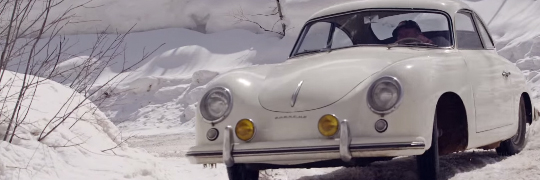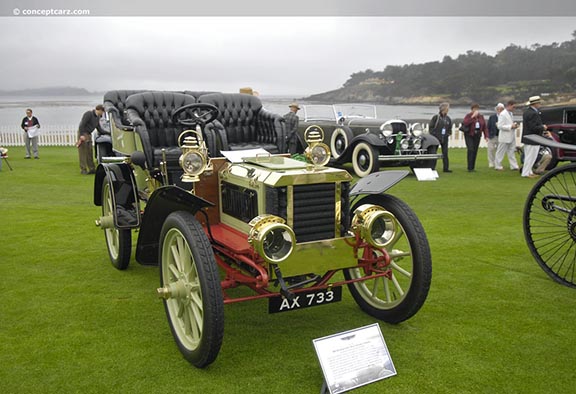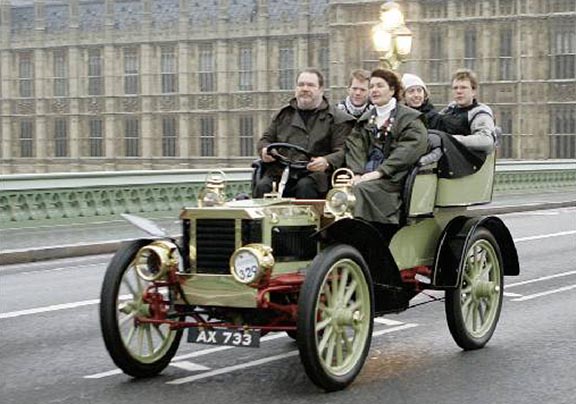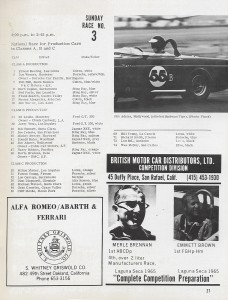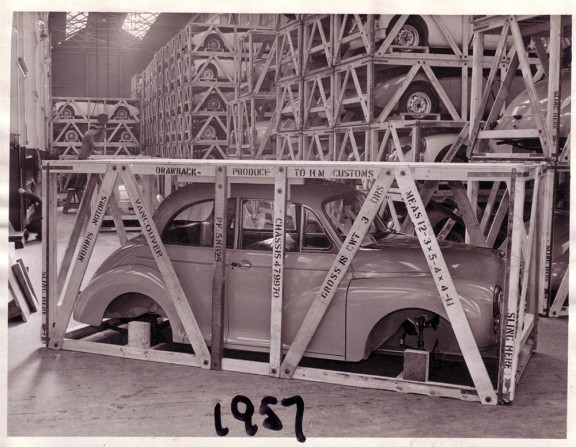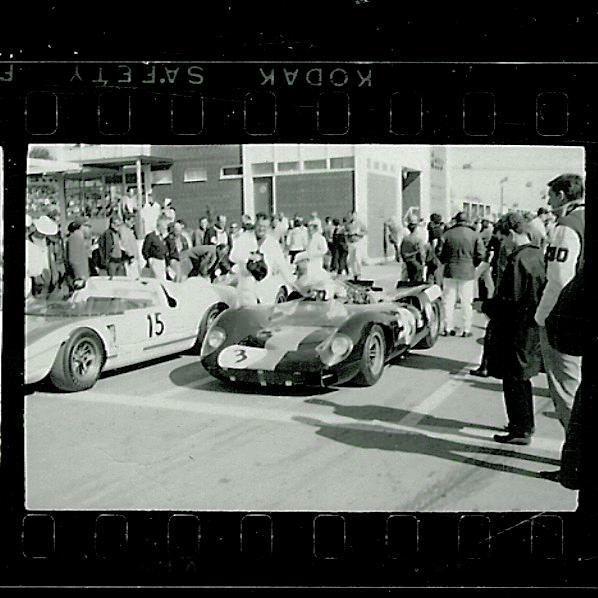The late Bill “Doc” Molle was somewhat of a renaissance man: Lawyer, Dentist, legitimate Admiral in the US Navy, and a racer’s racer. He would, as the saying goes, race you for “money, marbles, or chalk”. An active road racer in the 50’s, 60’s and 70’s, he won two Pacific Coast Championships in Class “H” Modified. However, it seems he became a bit disillusioned with all the attention being given to the ‘new’ class of big bore racers, and felt particularly chapped when Jim Hall (of Chaparral fame) came along and usurped his accustomed number ’66’ in the West Coast events.
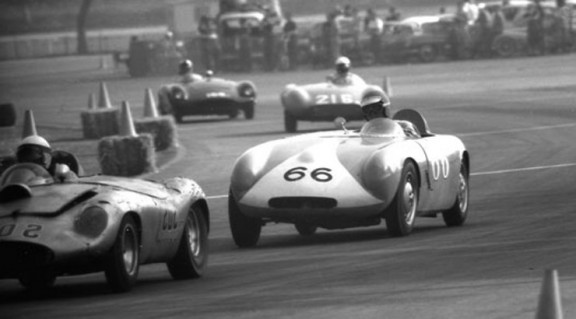
Bill Molle in his Panhard Special (66) - www.tamsoldracecarsite.net
In his later years, Molle prepared an article “…for Joe Puckett, who began making a small news letter called small times, but he died and the project ended. I tried to get the message across that we were there too.”
Bill sent this unpublished article to “apprentice” motorsport historian, Frank Sheffield, and urged him to put it online. With Frank’s permission, we are reprinting Bill’s article – an honest, humorous, and emotional look back at when sports car racing all began. From turning down a Le Mans drive, to testing harnesses on cadavers, this is a great read. (Note: We have made some minor punctuation and grammar edits for ease of reading, but otherwise it remains as he wrote it.)
———————————-
I think it is about time that I say something about “us”. We started this thing about racing about in sports cars in the early 50’s. Some of us went on to gain fame in the big bore machines, such as Shelby, Miles, Motschenbacher, Patrick and many others like these. But there was a much, much larger group of us who, for the lack of money, professional, prior commitments, dedication, made up the bulk of the program. The majority of the crowd in attendance who drive their MG’s, TR’s, Porsches to work every day really came to these events to see how their car did against others like it, and of course there was the Walter Mitty syndrome. Certainly it was exciting to see the big bore monsters run too, but that was icing on the cake.

Bill Molle (far right, cut off) at Riverside in 1969 (Formula Photographic Archives)
Now there was the sweat, work, all night before the race, buying spare parts, making spare parts – even when the kids needed shoes – and doing your own work because you could not hire mechanics and pit crew. You did it with volunteer help who also loved the race, but driving was not their bag, fixing was. It made up a dedicated team of friends who are probably still friends after all these years. Some of us got killed or injured due to lack of skill, mechanical failure and a dozen other reasons, but we still came, for nothing more than a trophy and the occasional fan that wanted your autograph. The mechanics didn’t even get the trophy.

Helping hands at Riverside 1969 (Formula Photographic Archives)
We remember many of the innovative ideas and mechanical gizmos that some of the backyard mechanics made to get more out of the engines. Balchowski, Jerry Fairchild for another. Don Miller with his one-a-week Crosleys, Vaseck Polack cutting the top off of the 356 to make the first roadster. We had ideas and idea of ideas. I had an idea to have shoulder harnesses in the cars, like fighter planes. Chick was president of the Cal Club and he and I built the first shoulder harness and tested them on cadavers in the Dental School morgue. They worked, and Chick mandated the harnesses in the Cal Club. The first Saturday after this rule, Lee Brown tested it for real in a Bug Eye at Riverside. It worked.
We remember the angst of getting the crew together in the early a.m. to get to the race and get through inspection, get the pit passes, con Sylvia into giving you 6 instead of 4 passes. How come they raised the entry fee from 15 dollars to 20? The hard labor of getting the car and tools off the trailer into the pits, and then taking the tow car out of the pits about 600 feet away, where you had to go to get what you forgot. We won’t forget that. We hated it at the time and now we loved every minute of it. We grieved when one of us was killed or injured, we rejoiced when we could win.
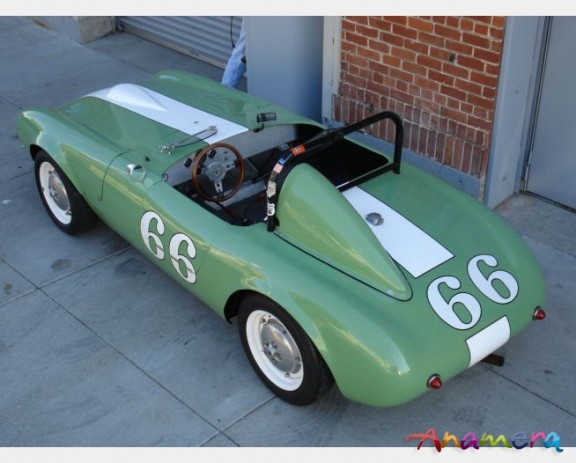
Bill Molle's 1952 Fairchild Panhard H-Modified Racecar (www.finecars.cc)
There were lots of us – Monise, Ribbs, Edmiston, Parkinson – who could hold their own against any driver, given the opportunity. I remember listening to the factory rep of Duetsch-Bonnet talking at me for 6 straight hours, pleading me to allow them to use my fuel injection system, offering me the Le Mans ride in their car, but I had enough money to say no. Mostly because the Frenchman all the time he was talking to me was about 2 inches away from my face and he was spitteling on me all the while. I not only got wet, but pissed.
Yes, we had creativity, perseverance, and courage to try. We paid our dues and then some.
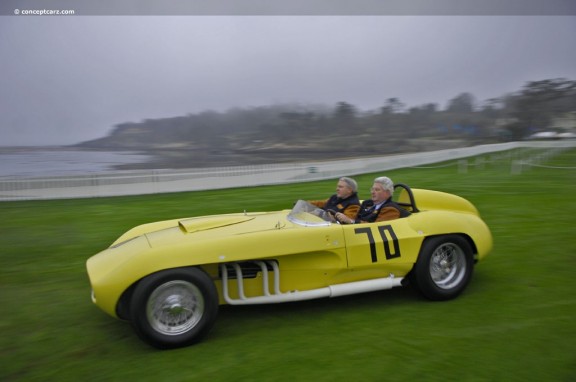
Balchowski's 1959 Ole Yeller III (www.conceptcarz.com)
It has come time for us who drove our cars, some home built, some factory cars, and some the production cars that we drove to work the next day if running – to be recognized for the hero drivers we were. Balchoski built Ole Yeller and beat the best of them, Miller built 1500-dollar Crosleys and beat the best France had to offer. I found it much harder to drive to the limit a small bore car with narrow tires than a large horsepower machine that you could help steer with the engine.
It is time for guys that made fame and, once in a rare while, fortune out of the racing to recognize that without us you could not have done it. Now that I am an old geezer, I give this from the heart.
– Bill “Doc” Molle

